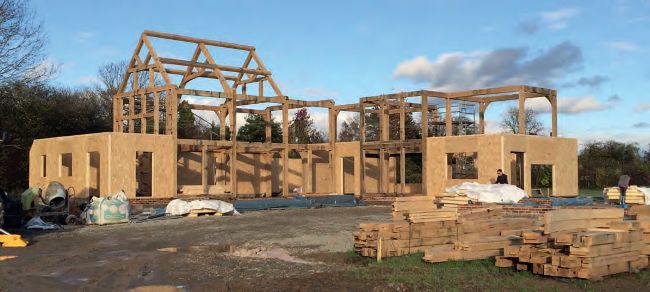Self-build mortgages: what you need to know
Securing the funding you need is a major part of self-building. Rebecca Foster summarises the essential information

This oak frame skeleton, erected by Border Oak (
www.borderoak.com), was preengineered in the firm’s workshop before being delivered to site. If you are building with an offsite construction method, an advance stage payment mortgage could be a good fit as you’ll have to make a significant deposit to the frame manufacturer
Getting your finances in order is a key step in any major project. Some are lucky enough to have sufficient savings or equity in existing property to complete their schemes loan-free – but the vast majority of self-builders will need to take out a mortgage.
The homogeneous approach to lending adopted by most high street banks means they struggle to deliver funding for new bespoke homes. Step in self-build mortgages. Unlike standard products, these are tailored packages designed to release money in stages to fit the spending pattern and relative value of your project as it gets built. They’re typically available through specialist brokers such as BuildStore, which works with a range of banks and building societies.
Government support for self-build has helped to improve choice. A number of lenders are returning to the market, having pulled out after the recession. But how does a selfbuild mortgage work, and what do you need to know when it comes to securing the right funding for your project?
1 What are the differences between regular and self-build mortgages?
In the majority of scenarios, when you take out a mortgage to buy an existing property, the money is released just before you complete on the purchase. “However, this isn’t much help for self-builders as the house doesn’t exist yet,” says Rachel Pyne, director of financial services at BuildStore. Without a finished property, there’s no collatoral.